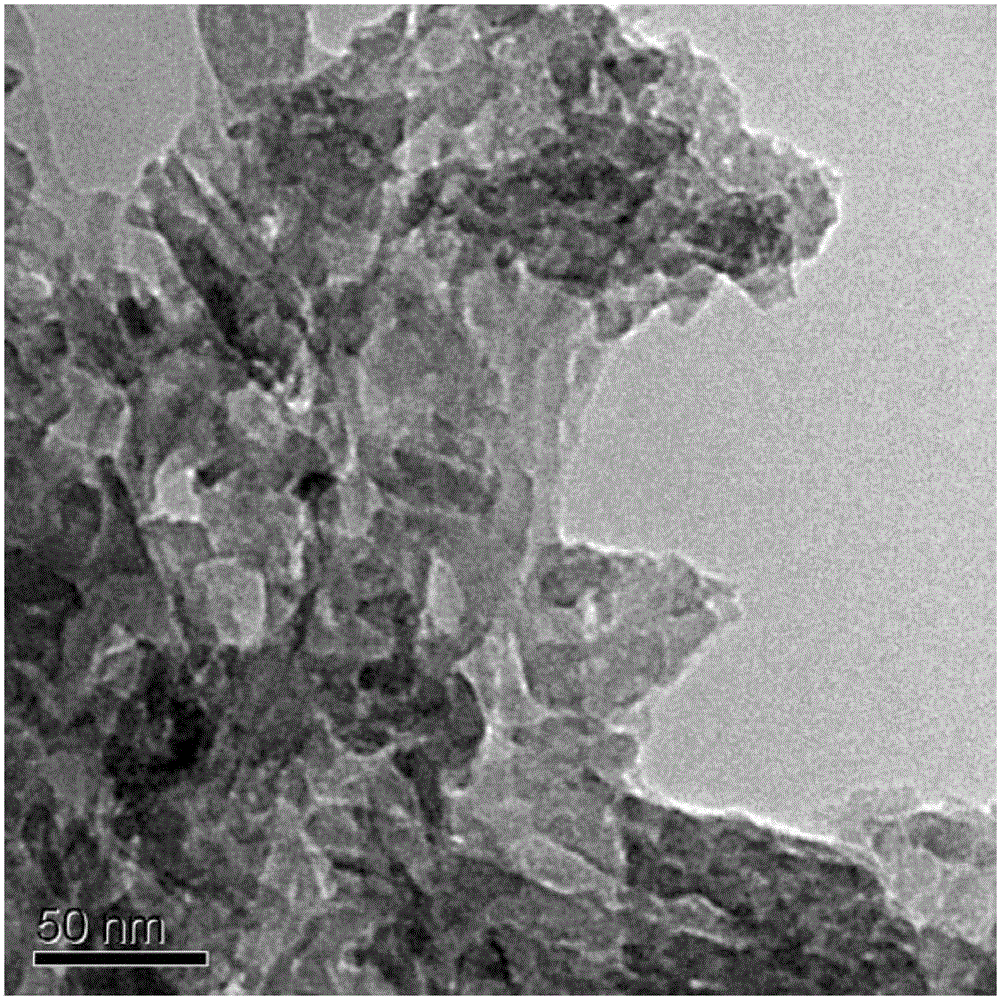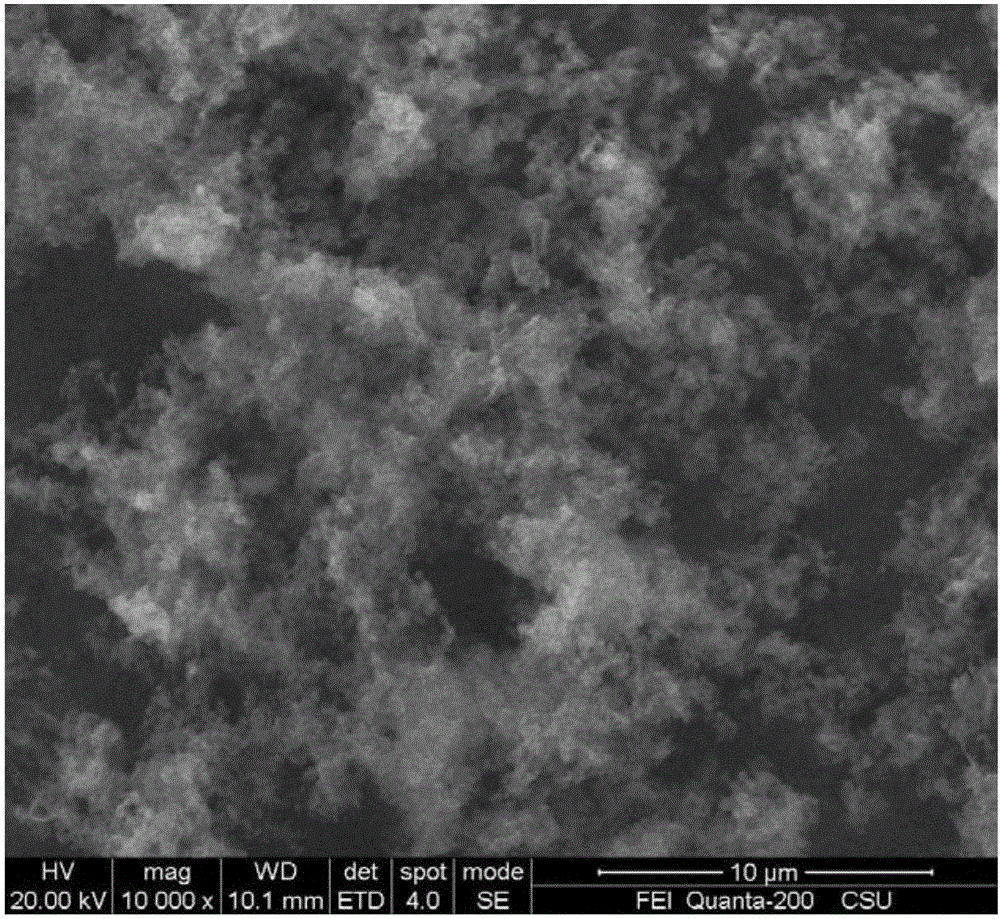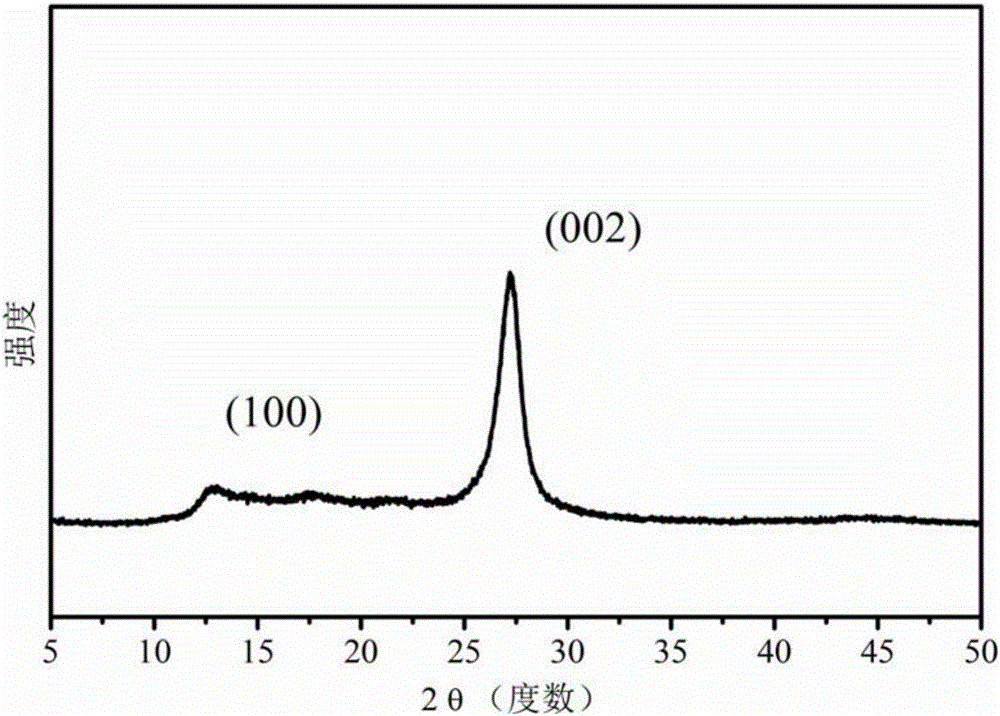Preparation method of graphite type C3N4 material, graphite type C3N4 material and application of graphite type C3N4 material
A C3N4, graphite-based technology, applied in chemical instruments and methods, water/sludge/sewage treatment, chemical/physical processes, etc., can solve the problems of unfavorable industrial production, cumbersome preparation process, and high cost of raw materials, and achieve fewer types of raw materials , simple process, high photocatalytic activity
- Summary
- Abstract
- Description
- Claims
- Application Information
AI Technical Summary
Problems solved by technology
Method used
Image
Examples
Embodiment 1
[0030] A kind of graphite type C of the present invention 3 N 4 The preparation method of material comprises the following steps:
[0031] Weigh 6 parts of urea, 10g each, place them in 100mL crucibles, cover the lids, and then wrap them tightly with tinfoil; place the above samples in the middle of the muffle furnace for calcination. Calcination is specifically as follows: according to the heating rate of 3°C / min, 4°C / min, 5°C / min, 6°C / min, 7°C / min, and 8°C / min, the urea is heated from room temperature to 600°C, and then The temperature was kept at 600°C for constant temperature calcination for 4h. After cooling in the air, grind the sample in a mortar for 5 minutes, and the resulting bright yellow powder is graphite type C 3 N 4 Material. In this example, the graphite-type C 3 N 4 The materials are numbered A1, A2, A3, A4, A5, and A6 respectively, and their specific surface area test results are shown in Table 1.
[0032] figure 1 Graphite type C prepared for this e...
Embodiment 2
[0039] A kind of graphite type C of the present invention 3 N 4 The preparation method of material comprises the following steps:
[0040] Weigh 3 parts of urea, 10g each, and place them in 100mL crucibles, cover the lid, and then wrap it tightly with tinfoil; place the above sample in the middle of the muffle furnace for calcination. Specifically, the calcination is to heat the urea from room temperature to 600°C at a heating rate of 5°C / min, and then keep the temperature at 600°C for constant temperature calcination, and the constant temperature calcination time is 2h, 3h, and 4h respectively. After cooling in the air, grind the sample in a mortar for 5 minutes, and the resulting bright yellow powder is graphite type C 3 N 4 Material. In this example, the graphite type C prepared when the constant temperature calcination time is 2h, 3h, 4h 3 N 4 The materials are numbered B1, B2, and B3 respectively, and their specific surface area test results are shown in Table 2.
...
Embodiment 3
[0045] A kind of graphite type C of the present invention 3 N 4 The application of materials in the treatment of landfill leachate includes the following steps:
[0046] Add the graphite type C that embodiment 1 makes in landfill leachate 3 N 4 Material A3 was ultrasonically dispersed at a frequency of 10KHz for 3 minutes, and the resulting mixture was degraded by shaking at a speed of 150r / min for 48 hours under a light intensity of 15Lux to complete the degradation of landfill leachate. In the present embodiment, graphite type C is added in every 100mL of landfill leachate 3 N 4 The materials are 0.01g, 0.02g, 0.03g, 0.04g, 0.05g respectively, and the initial total organic carbon concentration in landfill leachate is 100mg / L.
[0047] Figure 4 For different graphite type C 3 N 4 Effect diagram of material addition on landfill leachate degradation. Such as Figure 4 Shown, the graphite type C prepared by the present invention 3 N 4 For landfill leachate with an i...
PUM
 Login to View More
Login to View More Abstract
Description
Claims
Application Information
 Login to View More
Login to View More - R&D
- Intellectual Property
- Life Sciences
- Materials
- Tech Scout
- Unparalleled Data Quality
- Higher Quality Content
- 60% Fewer Hallucinations
Browse by: Latest US Patents, China's latest patents, Technical Efficacy Thesaurus, Application Domain, Technology Topic, Popular Technical Reports.
© 2025 PatSnap. All rights reserved.Legal|Privacy policy|Modern Slavery Act Transparency Statement|Sitemap|About US| Contact US: help@patsnap.com



